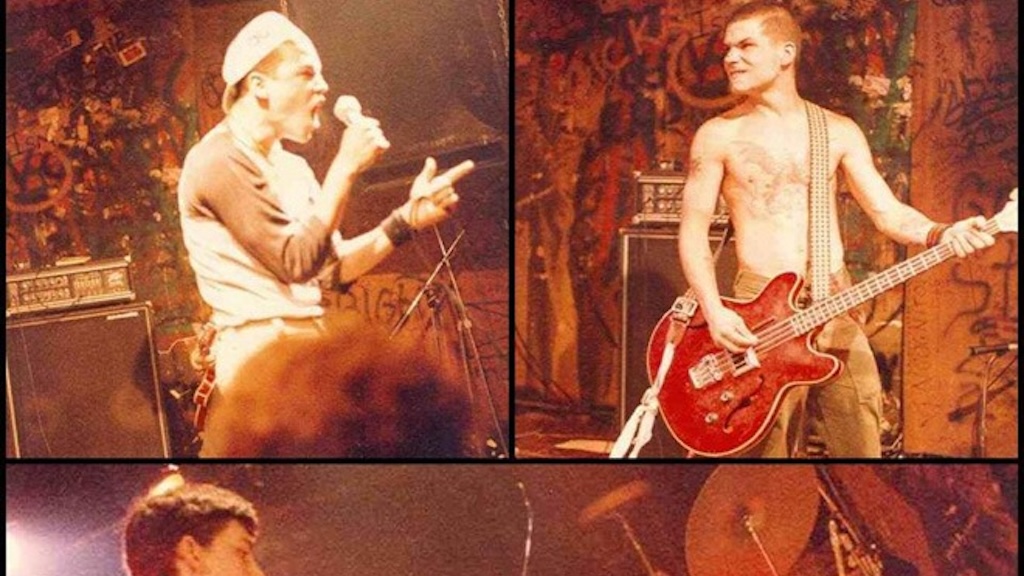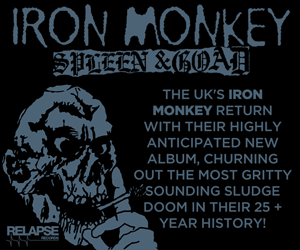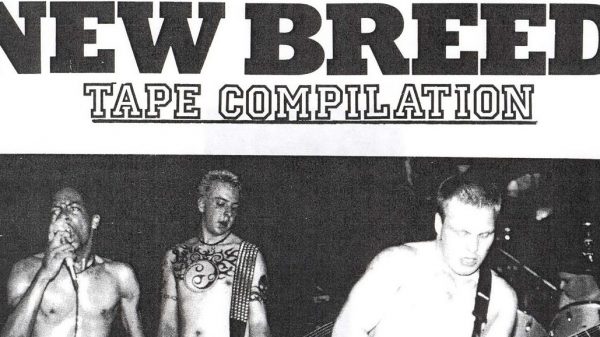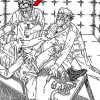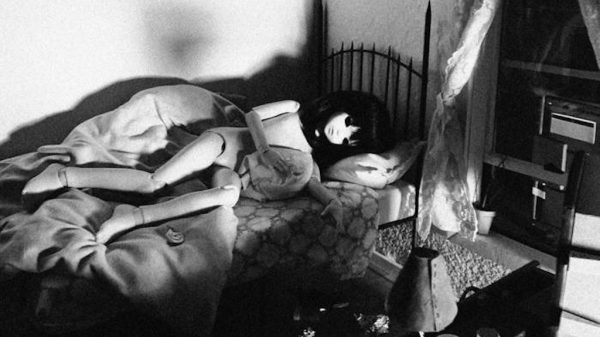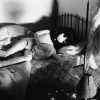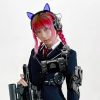Text and Photos via Quixotic Dreams.
Written by Freddy Alva
Texto en español a continuación
One of the more enduring motifs in the development of American hardcore is the oft-repeated description of this burgeoning youth subculture as being a predominantly white suburban dominated one. While this might have been true in certain quarters of the nation during the hardcore explosion in the early ’80s, the situation in NYC looked a bit different.
Kids growing up in New York’s five boroughs, and beyond, came from extremely varied national origins, the Latino one being an especially prominent one. Waves of immigration, starting in the ’50s, from Puerto Rico/Cuba/Dominican Republic, plus subsequent ones from South and Central America in later decades, gave rise to generations straddling a bilingual gravitational pull. As punk music transitioned into hardcore by 1980, the epicenter of this new music came to be centered around a mostly Hispanic neighborhood: Manhattan’s Lower East Side or “Loisaida,” as the locals called it.
The following list is a tribute to those Latinos that represented hardcore in its earliest days, all the while dealing with the usual adversarial forces of school/family/peers, on top of the extra layer of identity-related issues prevalent among first generation born or recently arrived immigrants to America. I focused on band members and scenesters that were involved in the hardcore scene circa 1980 – 1985. I know that tons of other people from a Hispanic background came after that era, and are still involved today, but I’ll let someone else document them.
Let’s move on to some of the pioneers that lived “la vida loca” during those halcyon hardcore days…
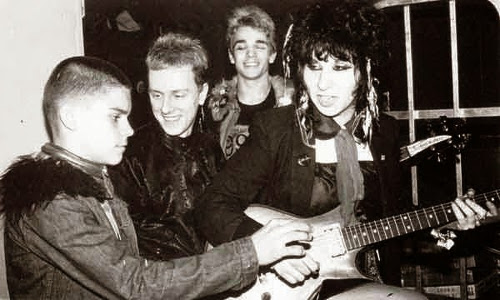 Denise w/ guitar, Nick in back & a 12-year-old Harley
Denise w/ guitar, Nick in back & a 12-year-old Harley
Harley would go on to form the quintessential NYHC band: the Cro-Mags.
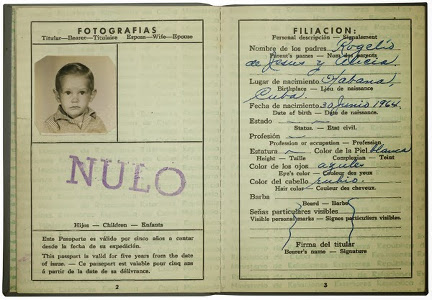 Roger’s passport from 1964
Roger’s passport from 1964
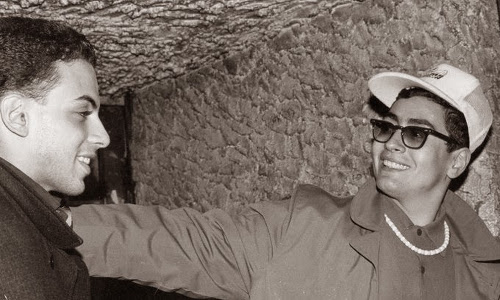 Robb & Louie outside of CBGB’s, 1983
Robb & Louie outside of CBGB’s, 1983
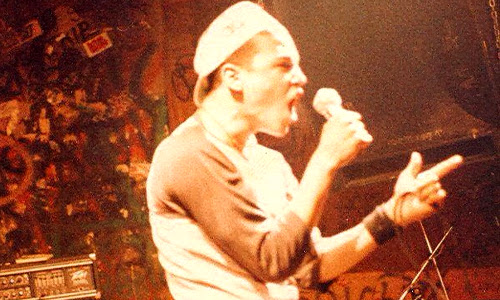 Eric performing at CBGB’s, 1984
Eric performing at CBGB’s, 1984
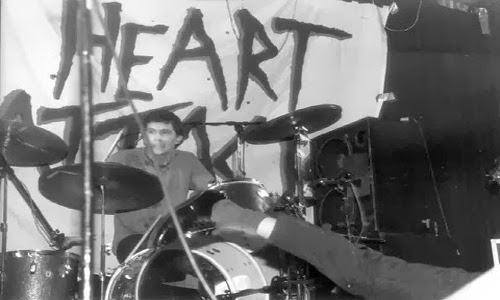 Javier performing at the Peppermint Lounge, 1983
Javier performing at the Peppermint Lounge, 1983
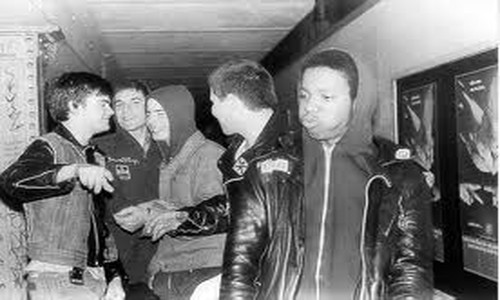 Ray second from left and Dito in the middle, 1982
Ray second from left and Dito in the middle, 1982
Jose Gonzales (The Mob)
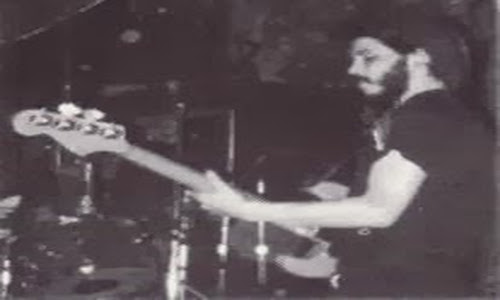 Jose performing at CBGB’s, 1984
Jose performing at CBGB’s, 1984
 Tony Dust far left with the matinee crew, 1983 (photo by Drew Carolan)
Tony Dust far left with the matinee crew, 1983 (photo by Drew Carolan)
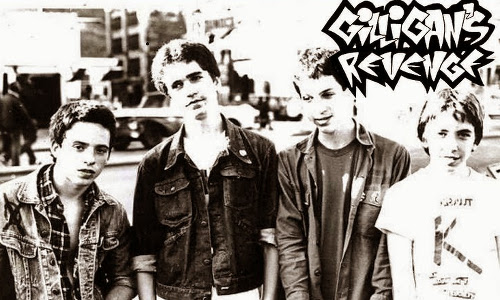 Ernie second from left with Gilligan’s Revenge in 1982
Ernie second from left with Gilligan’s Revenge in 1982
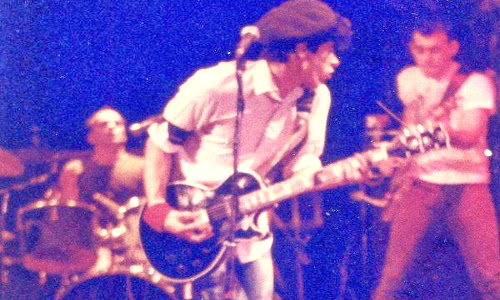 Abraham performing at CBGB’s, 1985
Abraham performing at CBGB’s, 1985
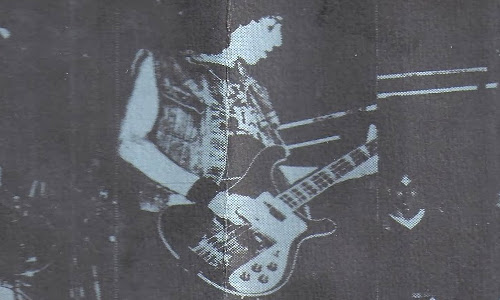 Jose in the insert for Leeway’s 1985 Enforcer demo
Jose in the insert for Leeway’s 1985 Enforcer demo
I could go on and on about Latinos and their impact on the NYHC scene, with tons more examples like:
Chris Colon (Hamilton), 1/2 Puerto Rican singer of the Armed Citizens.
A bunch of young Cuban teenagers that had a short-lived band called No Remorse, circa ’85.
Dominican Ralphie Boy, Squat Or Rot founder and Jesus Chrust/Disassociate singer.
Rudy Ruiz from Bronx hardcore/metalheads, The Unjust.
Early Agnostic Front bassist, Diego.
Not to mention all the post-’85 Latinos that started bands, did fanzines/record labels, hung out in the scene; something that continues to flourish to this day in the ever expanding universe known as NYHC. Huge thanks to Ken Wagner, Sean Taggart, Loizos Gatzaris, Drew Stone, Denise Mercedes, Nunzio, Ray Parada, Mark Yoshitomi and Soledad Villanueva for all the info.
¡¡¡El impacto hispano en la primera escena hardcore de Nueva York!!!
Texto y fotografías vía Quixotic Dreams.
Escrito por Freddy Alva // translation via Google Translate
Uno de los motivos más duraderos en el desarrollo del hardcore estadounidense es la descripción frecuentemente repetida de esta floreciente subcultura juvenil como dominada predominantemente por blancos suburbanos. Si bien esto podría haber sido cierto en ciertos sectores de la nación durante la explosión del hardcore en el A principios de los años 80, la situación en Nueva York era un poco diferente.
Los niños que crecieron en los cinco distritos de Nueva York, y más allá, provenían de orígenes nacionales muy variados, siendo el latino uno de los más prominentes. Olas de inmigración, a partir de los años 50, de Puerto Rico/Cuba/República Dominicana, y otras posteriores. de América del Sur y Central en décadas posteriores, dio lugar a generaciones a caballo entre una atracción gravitacional bilingüe. Cuando la música punk pasó a ser hardcore en 1980, el epicentro de esta nueva música pasó a centrarse en un vecindario mayoritariamente hispano: el Lower East Side de Manhattan o “Loisaida”, como la llamaban los lugareños.
La siguiente lista es un tributo a aquellos latinos que representaron el grupo incondicional en sus inicios, mientras se enfrentaban a las fuerzas adversarias habituales de la escuela, la familia y los compañeros, además de la capa adicional de problemas relacionados con la identidad que prevalecen entre los nacidos en la primera generación o inmigrantes recién llegados a Estados Unidos. Me centré en los miembros de la banda y los escenógrafos que estuvieron involucrados en la escena hardcore alrededor de 1980 – 1985. Sé que toneladas de otras personas de origen hispano vinieron después de esa época, y todavía están involucradas hoy, pero no Dejaremos que alguien más los documente.
Pasemos a algunos de los pioneros que vivieron “la vida loca” durante aquellos días felices y duros…
Denise Mercedes, Nick Marden y Harley Flanagan (Los estimuladores)
Denise con guitarra, Nick atrás y una Harley de 12 años
Denise Mercedes (mitad dominicana/española), junto con el bajista Nick Marden (mitad mexicano de California) y el baterista Harley Flanagan (herencia dominicana/española), tocaron en The Stimulators, una banda de hardcore muy influyente. Su canción “M.A.C.H.I.N.E.” es un componente crucial para el desarrollo de la música, ya que es una de las primeras canciones con sonido hardcore de Nueva York. Nick también acuñó el término “Loud Fast Rules!”, un importante grito de guerra para el grupo de hardcore de pelo corto.
Harley pasaría a formar la banda por excelencia de NYHC: los Cro-Mags.
Roger Miret (Agnostic Front)
Pasaporte de Roger de 1964
Nacido como Rogelio De Jesus en La Habana, Cuba, la familia de Roger Miret emigró a los Estados Unidos en 1968. Tocó el bajo en varias bandas en el área de Nueva York y Nueva Jersey antes de convertirse en vocalista de AF en 1982, justo a tiempo para su EP seminal United Blood de 1983. El álbum de AF de 2011, My Life My Way, incluía una canción hardcore cantada íntegramente en español. El medio hermano menor de Roger, Freddy Cricien, creció saltando al escenario y cantando canciones de AF cuando era niño. Cuando era adolescente, fundó el grupo NYHC, Bola loca.
Robb Nunzio y Louie Rivera (Antidote)
Robb y Louie fuera del CBGB, 1983
El cantante original de Antidote, Louie Rivera, es puertorriqueño y el guitarrista Robb Nunzio es de ascendencia puertorriqueña/italiana. Su EP Thou Shalt Not Kill de 1983 marcó el tono de lo que se convertiría en el sonido NYHC: melodías rápidas y viciosas con influencias de metal subyacentes. continúa hasta el día de hoy. Como dice Robb: “¡Eso es lo que nos hizo tan buenos, dos relaciones públicas y dos Micks (irlandeses)!”
Eric J. Casanova (Cro-Mags)
Eric actuando en CBGB’s, 1984
El cantante original de Cro-Mags, Eric Casanova, es de ascendencia puertorriqueña y creció en Astoria, Queens. Se le atribuye haber escrito la letra de “Life of My Own” y coescribir, con Harley Flanagan, otro par de Cro-Mags clásicos. Melodías: “Hard Times” y “Street Justice”. Tocó con los Cro-Mags de 1982 a 1984 y finalmente los dejó por razones personales. Los rumores sobre su fallecimiento son muy exagerados ya que últimamente se le ha visto todavía viviendo en Nueva York.
Javier Madariaga (Heart Attack)
Javier actuando en el Peppermint Lounge, 1983
Javier Madariaga es originario de la Ciudad de México y tocó en una de las primeras bandas de NYHC que sacaron un disco, Heart Attack, en su EP God Is Dead de 1981. También pasó a tocar en las bandas Reagan Youth y A.P.P.L.E., así como en sus propios proyectos en solitario. Se le atribuye haber tocado lo que se conocería como la primera versión grabada del patrón de batería “blast beat”, como se escucha en la canción “From What I See” de Keep Your Distance 12 de 1983 de Heart Attack. El patrón de batería se convertiría en una gran influencia en el híbrido extremo hardcore/metal conocido como grindcore.
Dito Montiel & Ray Parada (Major Conflict)
Ray segundo por la izquierda y Dito por el medio, 1982
Orlandito Montiel es hijo de un inmigrante nicaragüense y una madre irlandesa. La familia de Ray Parada proviene de España. Ambos crecieron en Astoria, Queens y formaron Major Conflict en 1982, compartiendo miembros con otra banda clásica de NYHC: Urban Waste. a una carrera de modelo y actualmente es un director galardonado. Ray pasó a cantar para la banda A-Bomb-A-Nation de finales de los 80 y junto con su hermano Ernie Parada de Token Entry, lo que representa una larga nota musical a pie de página en la historia de NYHC.
José González (The Mob)
José actuando en CBGB’s, 1984
José “Ho” Gonzales era un adolescente dominicano de Jackson Heights, Queens cuando en 1980 ayudó a formar una de las bandas clásicas de NYHC: The Mob. Tocó tanto en sus 7” como en su álbum, además de unirse a HR, de The Bad. Brains, en su proyecto Zion Train a finales de los 80. The Mob todavía se reproduce periódicamente y continúa lanzando nuevas grabaciones.
Tony Dust y Paul Dordal (Lower East Side Skinheads)
Tony Dust en el extremo izquierdo con el equipo de la sesión matinal, 1983 (foto de Drew Carolan)
Tony Dust era un skinhead puertorriqueño de Brooklyn que junto con Paul Dordal (ascendencia puertorriqueña/francesa) contribuyeron al desarrollo de la mentalidad NYHC. Tony nunca tocó en una banda y Paul intentó hacerlo con Harley Flanagan, pero nunca tuvo éxito. Dicho esto, tanto Dust como Dordal eran skinheads influyentes que frecuentaban el Lower East Side. Sean Taggart me contó la siguiente historia: “Paul había abandonado la escuela, se fue a California, frecuentaba la iglesia Black Flag y estaba allí cuando Henry [Rollins] se unió. Hizo lo más duro de Los Ángeles y regresó como skinhead”. Dordal instruyó a los niños sobre cómo afeitarse la cabeza correctamente y qué modas parecían demasiado “punk”. También escribió la canción de Murphys Law “California”. Pipeline”. Tony era conocido por iniciar peleas y su política de centro derecha, puntos de vista que él y Dordal compartían. Su primo menor, Javier (SOB) Carpio, era un miembro destacado de Sunset Park Skins y más tarde formaría el ‘ Merauder, banda de metalcore de los 90. QEPD SOB.
Ernie Parada (Token Entry, Gilligan’s Revenge)
Ernie segundo desde la izquierda con Gilligan’s Revenge en 1982
Los padres de Ernie Parada son de España. Comenzó Gilligan’s Revenge en 1980 con amigos de su barrio en Astoria, Queens. Después de varios cambios de formación, se convirtieron en Token Entry en 1984. Más tarde pasó a tocar en In Your Face, Black Train Jack, Arsons, Higher Giant y actualmente se encuentra en Grey Area, además de ser un exitoso ilustrador comercial.
Abraham Rodríguez (Urgent Fury)
Abraham actuando en CBGB’s, 1985
Abraham Rodríguez es un puertorriqueño criado en el sur del Bronx. En 1980, fundó una banda llamada White Riot que se transformó en Urgent Fury en 1982. Su variedad más melódica de hardcore con carga política los diferenciaba de lo que estaba sucediendo en NYHC en el tiempo, como se demostró en su demostración de 1984. Abraham, un escritor consumado, recientemente resucitó a Urgent Fury con nuevos miembros. Vea una entrevista que le hice hace un par de años en este enlace.
José Ochoa (Leeway)
José en el inserto de la demostración de Enforcer de 1985 de Leeway
José Ochoa es de ascendencia colombiana y, junto con algunos amigos de su barrio en Astoria, Queens fundaron The Unruled en 1983. Se les atribuye haber aportado una fuerte influencia de metal cruzado al sonido NYHC, y más tarde cambiarían su nombre a Leeway en 1984.
Podría seguir y seguir sobre los latinos y su impacto en la escena de NYHC, con muchos más ejemplos como:
Chris Colon (Hamilton), 1/2 cantante puertorriqueño de Armed Citizens.
Un grupo de jóvenes adolescentes cubanos que tuvieron una banda de corta duración llamada No Remorse, allá por el ’85.
El dominicano Ralphie Boy, fundador de Squat Or Rot y cantante de Jesus Chrust/Disassociate.
Rudy Ruiz de Bronx hardcore/metaleros, The Unjust.
Diego, primer bajista del Frente Agnóstico.
Sin mencionar a todos los latinos posteriores al 85 que formaron bandas, hicieron fanzines/sellos discográficos, estuvieron en la escena; algo que continúa floreciendo hasta el día de hoy en el universo en constante expansión conocido como NYHC. Muchas gracias a Ken Wagner, Sean Taggart, Loizos Gatzaris, Drew Stone, Denise Mercedes, Nunzio, Ray Parada, Mark Yoshitomi y Soledad Villanueva para toda la información.

